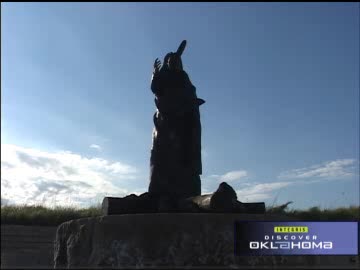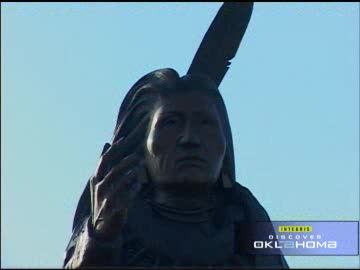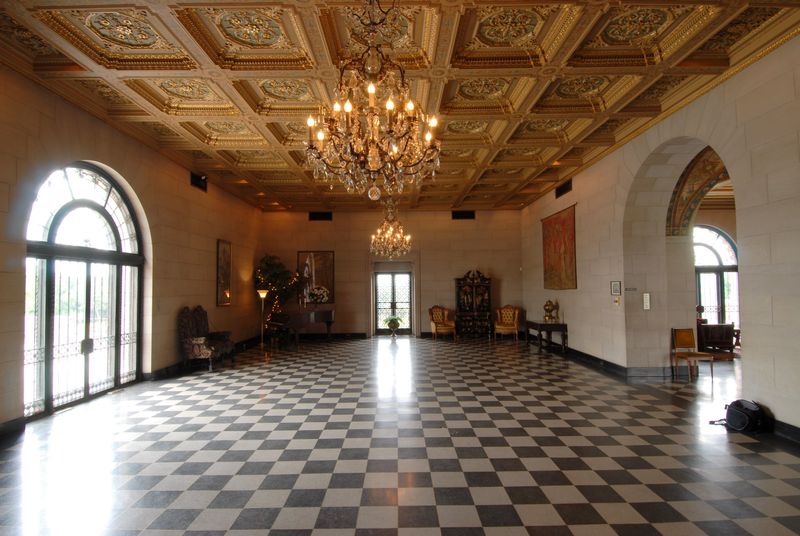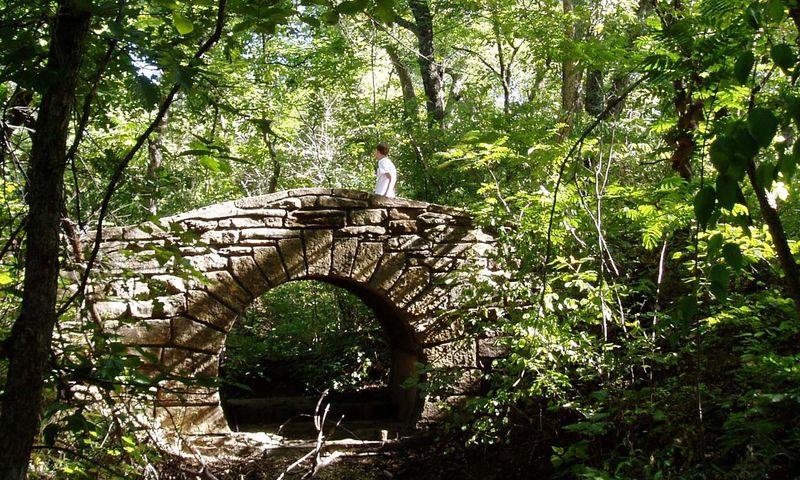Standing up for Civil Rights
In north-central Oklahoma just south of Ponca City, the tranquil 63-acre Standing Bear Park, Museum & Education Center tells the story of a courageous father, Chief Standing Bear, on a quest to bury his son’s remains in his indigenous homeland. The grounds of the park are covered with towering old trees and gentle native grasses, welcoming visitors to walking paths that weave among six tribal viewing courts, a small museum and a magnificent 22-foot bronze statue of Ponca tribal leader Chief Standing Bear.
The touching story of Standing Bear’s plea in an 1879 U.S. court of law to be recognized as a person and a citizen gracefully unfolds here. At his trial, Standing Bear uttered this now famous quote, which still resonates today: “This hand is not the same color as yours but if I pierce it, I shall feel pain. The blood that will flow from mine will be the same color as yours. I am a man. The same God made us both.”
In the area:
Built between 1925 and 1928, the Marland Mansion in Ponca City is the restored and preserved home of E.W. Marland, oilman and former governor of Oklahoma. Known as the “Palace on the Prairie,” the opulent 45,561-sq. ft. mansion cost $5.5 million to build at the time and features 55 rooms, including 10 bedrooms, 12 bathrooms, seven fireplaces and three kitchens.
Journey to the Heart of the Chickasaw Nation
In the heart of the Chickasaw Nation lies the Chickasaw Cultural Center, located near Sulphur. This world-class museum complex is dedicated to celebrating Chickasaw history and culture. The stunning, state-of-the-art campus utilizes interactive media and features architectural elements such as native stone, wood and copper.
Located on 109 acres of rolling hills, woodlands and streams adjacent to the Chickasaw National Recreation Area, the Center boasts an exhibit center, the Holisso Research Center, large-format theatre, amphitheater, sky terrace, traditional village and several water features. The largest tribal cultural center in the nation, the Chickasaw Cultural Center is the culmination of a long quest by the Chickasaw people to tell their stories, to preserve and record their history and culture, and to perpetuate that legacy for generations to come.
In the area:
Visitors to the nearby Chickasaw National Recreation Area, Oklahoma's oldest national park area, will enjoy cool creeks flowing over travertine terraces, historic campgrounds, mineral springs and a wealth of lake activities on serene Lake of the Arbuckles. Savor an idyllic escape while camping, swimming, boating, hiking or cycling.
Cherokee Ways
Tucked away in the Oklahoma foothills of the Ozark Mountains, the city of Tahlequah is home to the Cherokee Nation. Explore Cherokee history at a number of museums, including the Cherokee National History Museum where you can view Smithsonian-level artifacts and interactive exhibits documenting Cherokee life before European contact, the Trail of Tears, the Civil War and modern day Cherokee Nation. Other nearby attractions include the Cherokee National Supreme Court Museum and the Cherokee National Prison Museum.
In the area:
Visit the Hunter's Home, an historic mansion built in 1845 by wealthy merchant George M. Murrell, who married the niece of Cherokee Chief John Ross. The only antebellum mansion in Oklahoma, the George M. Murrell Home is a certified Trail of Tears site. The home's beautiful grounds include an original springhouse, an 1896 smokehouse and a log cabin. An adjacent park area offers picnic tables, a nature trail and Park Hill Creek.






































